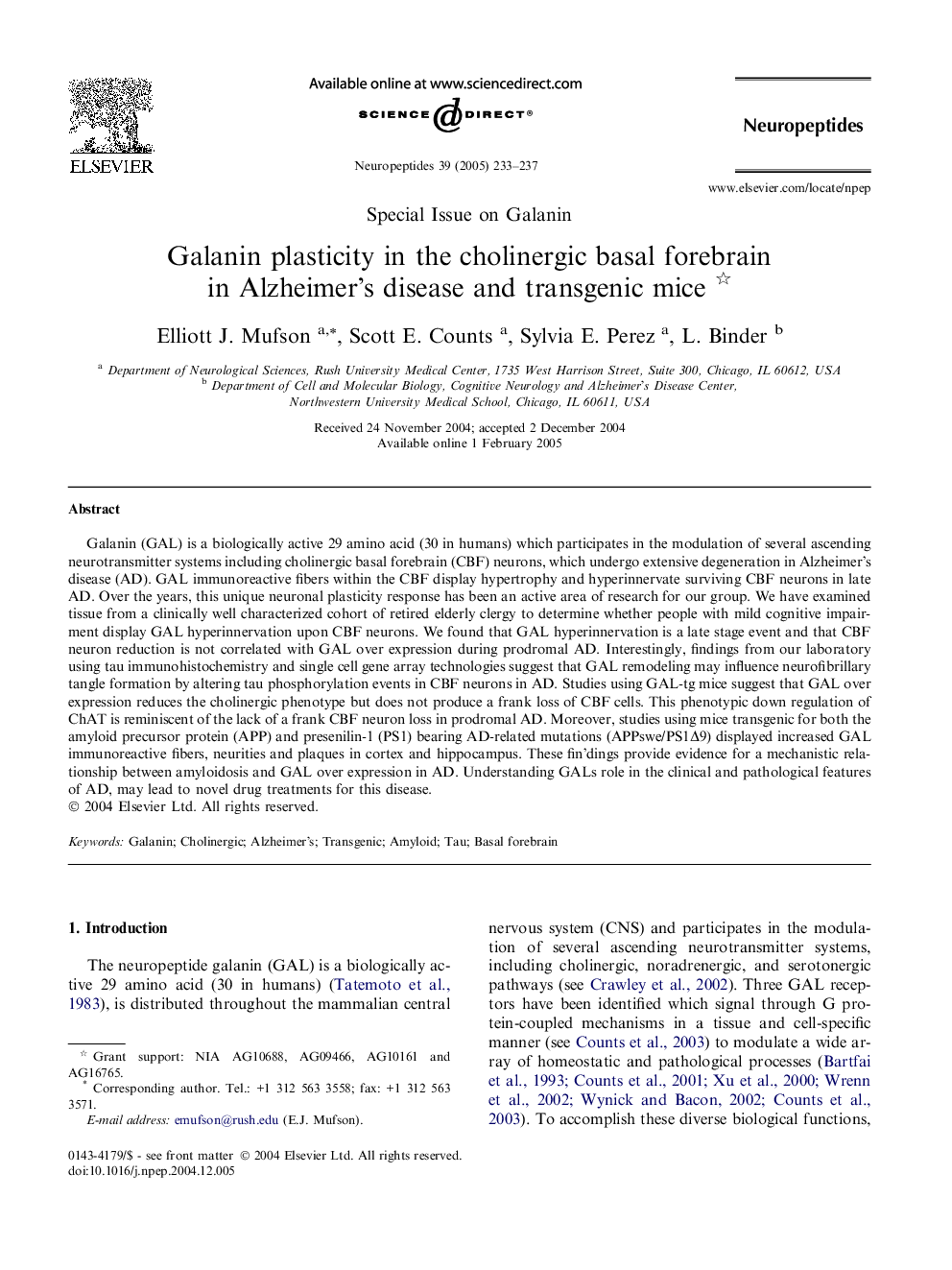| Article ID | Journal | Published Year | Pages | File Type |
|---|---|---|---|---|
| 9118803 | Neuropeptides | 2005 | 5 Pages |
Abstract
Galanin (GAL) is a biologically active 29 amino acid (30 in humans) which participates in the modulation of several ascending neurotransmitter systems including cholinergic basal forebrain (CBF) neurons, which undergo extensive degeneration in Alzheimer's disease (AD). GAL immunoreactive fibers within the CBF display hypertrophy and hyperinnervate surviving CBF neurons in late AD. Over the years, this unique neuronal plasticity response has been an active area of research for our group. We have examined tissue from a clinically well characterized cohort of retired elderly clergy to determine whether people with mild cognitive impairment display GAL hyperinnervation upon CBF neurons. We found that GAL hyperinnervation is a late stage event and that CBF neuron reduction is not correlated with GAL over expression during prodromal AD. Interestingly, findings from our laboratory using tau immunohistochemistry and single cell gene array technologies suggest that GAL remodeling may influence neurofibrillary tangle formation by altering tau phosphorylation events in CBF neurons in AD. Studies using GAL-tg mice suggest that GAL over expression reduces the cholinergic phenotype but does not produce a frank loss of CBF cells. This phenotypic down regulation of ChAT is reminiscent of the lack of a frank CBF neuron loss in prodromal AD. Moreover, studies using mice transgenic for both the amyloid precursor protein (APP) and presenilin-1 (PS1) bearing AD-related mutations (APPswe/PS1Î9) displayed increased GAL immunoreactive fibers, neurities and plaques in cortex and hippocampus. These fin'dings provide evidence for a mechanistic relationship between amyloidosis and GAL over expression in AD. Understanding GALs role in the clinical and pathological features of AD, may lead to novel drug treatments for this disease.
Related Topics
Life Sciences
Biochemistry, Genetics and Molecular Biology
Endocrinology
Authors
Elliott J. Mufson, Scott E. Counts, Sylvia E. Perez, L. Binder,
